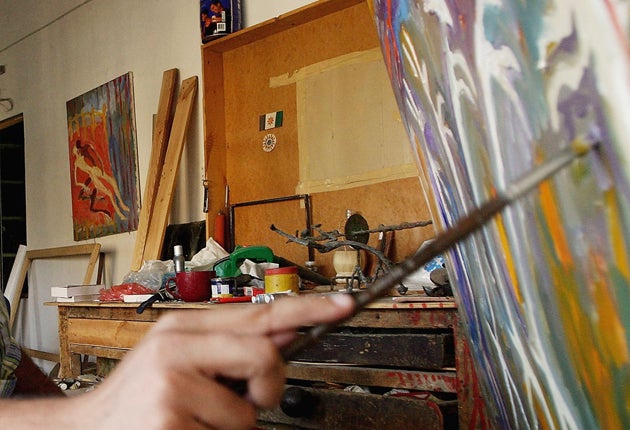
What courses? Art; fine art; art practice; applied art; illustration; drawing; art and design. Plus degrees in most specialist art practices.
What do you come out with? A BA, surprisingly (they don’t call it a ‘bachelor of arts’ for nothing), or BFA (bachelor of fine arts) in some cases.
Why do it? "Art is about a knowledge gained through human experience and understood by the acquisition and development of a practice. This embodiment of knowledge in visual, sensorial and physical form is varied and constantly changing. By studying art you will develop your creative, technical and intellectual ability. You need to test out your ideas and socially engage, reflect and establish a critical standpoint. If you are curious about the fabric of our environment, degrees in art will inspire you to experiment and share your thoughts through an evolving visual language." - Stuart Bennett, head of art, Edinburgh College of Art
Click here to read about what it's like to study Fine Art
What's it about? ‘What is art?’ is perhaps a more suitable question, and the lack of definitive answer to which goes a certain way to explain why there is no set format for art degree in 2011. The abstract concept of art covers so much, from renaissance masterpieces to short films, from watercolours to giant installations, that to try and sum up what to expect from an art degree is rather a redundant exercise. However, you can assume to a certain extent that study will be focused on perfecting your craft, whatever that may be, supported by lecturers who are themselves practicing artists. While a high percentage of your time is likely to be spent in the studio creating work and developing ideas, expect a certain amount of theory, from which you will learn to contextualize and be self-critical. This split between theory and practice will vary between institutions , and it is worth looking at individual universities to check what is expected of you. With over 1,200 courses coming under the banner of ‘art’ in UCAS’s system, programmes will vary widely, with some concentrating on particular practices (for example, photography, film and garden design all come under the banner), while others will try to give you a taste for disciplines across the spectrum before allowing you to specialise further down the line.
Study options: Most courses are thee years full-time study, with the exception of those at Scottish universities, where are four or five years and can result in an MA. Reading also offers a four year BA, and at Sheffield Hallam and Brighton you can study a four-year master’s straight from undergrad level. If studying alongside a language in a joint honour’s, you’re likely to be spending a year abroad too. When it comes to assessment, this will depend on course structure in terms of practical and theoretical balance, although a high proportion will be based on your portfolio of work, while there’s sure to be exams and coursework to test you on your theoretical and historical knowledge.
What will I need to do it? It’s all about flair and potential in your chosen artform, and therefore strong portfolios count for a lot. Foundation courses are also popular routes to entry for those wishing to develop their skills after A-levels. In some cases, and especially in the top institutions, strong portfolios will need to be backed up with high grades – Edinburgh asks for two As or three Cs at A-level and UCL requires ABB. To study fine art at Oxford you’ll need three As at A-level, one of which is in an art-based subject, and to have completed an art foundation course.
What are my job prospects? Unsurprisingly most students want to go onto be practicing artists in their chosen fields, and accept that this is not the most easy industry to break into, with initial work being secured on a freelance or self-employed basis. However, according to The Times’ Good University Guide 2012, 38 per cent of art and design students end up in graduate-level jobs, but with a modest average salary of just over £17,000.
Where’s best to do it? Edinburgh topped the Complete University Guide 2012 for art and design, UCL, Oxford and Reading. However, of these, only Oxford featured in the top five for student satisfaction, with students from Newcastle saying they were most happy with the teaching on their course. Lincoln, Falmouth and Brunel all fared well for student satisfaction as well.
Related degrees: History of art; design; animation; film studies; graphic design.
Join our commenting forum
Join thought-provoking conversations, follow other Independent readers and see their replies
Comments